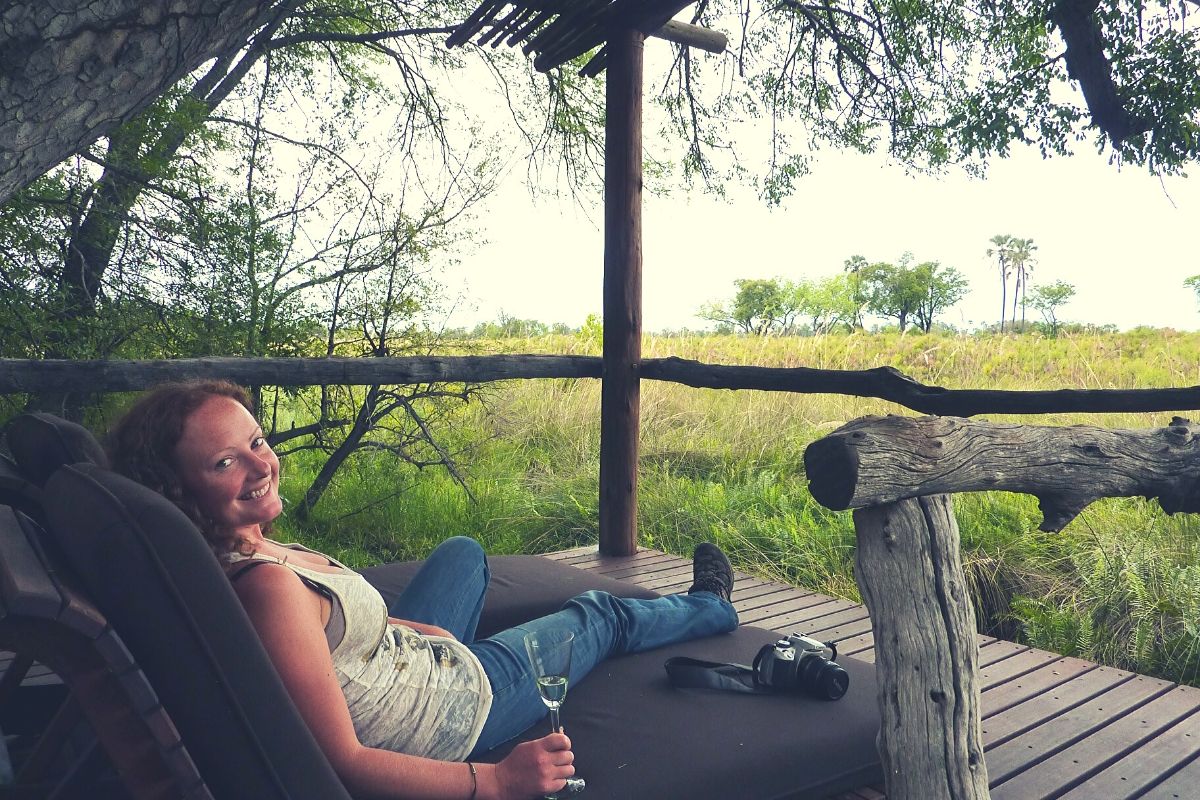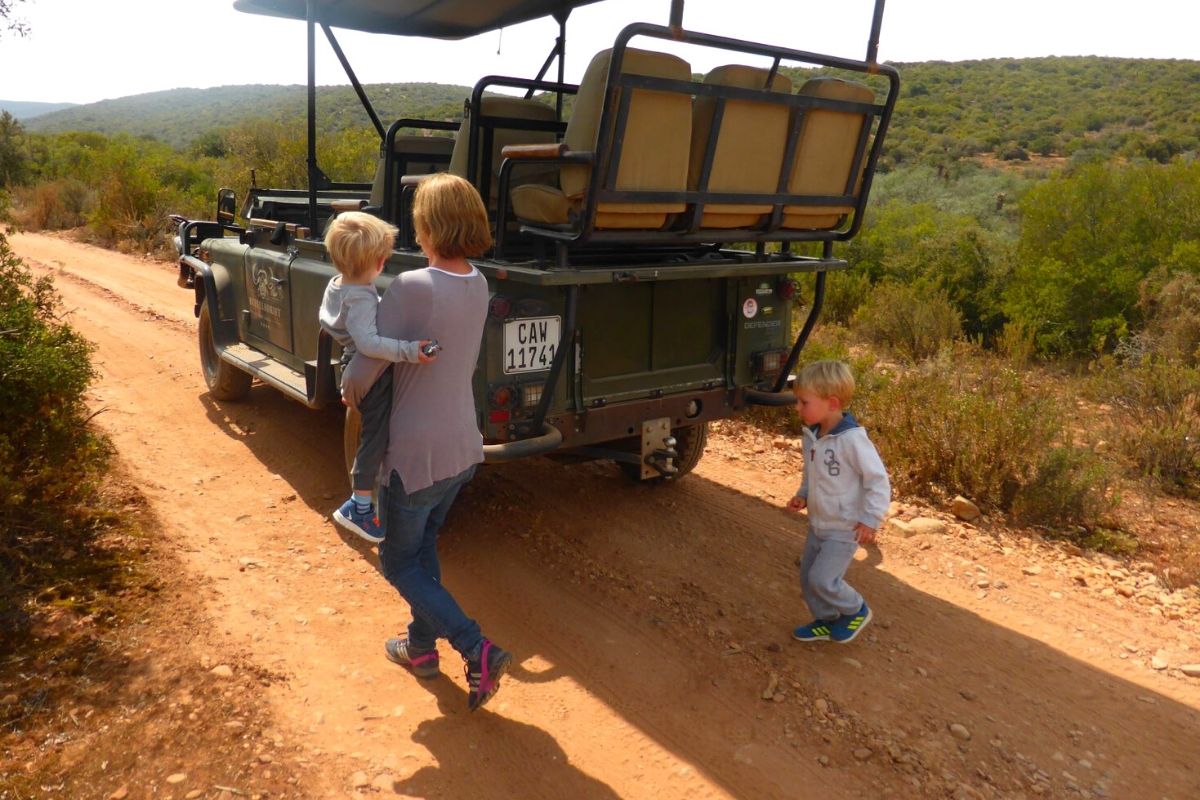What To Take on Safari with Kids: 10 Essential Items To Pack
A safari holiday may have been on your bucket list for years, but have you ever actually considered what to take on safari with kids?
Of course, there’s the usual family holiday paraphernalia (see our tips for packing for a family holiday). But if this is your first time on safari, there may be items that you haven’t considered and you’re wondering to to pack for an African safari with kids.
We’ve pulled together a list of our top 10 recommendations of what to take on safari with kids so that you can concentrate on enjoying your bucket list holiday without the worry of forgetting an essential item.
**This website contains affiliate links. If you click on a link that we recommend, we may receive a small commission at no extra cost to you**
We’ve been to Africa many times with the kids. We have family there and Ed works in the African safari industry. Going on safari with the kids is our passion so we know (from trial and error) what to take on safari with kids.
So, in no particular order here is…
What to take on safari with kids:
1. Snacks & water
OK. We said in no particular order but number one on our list every time is snacks. It’s the most important of the things to take on safari with kids.
If our kids aren’t eating every 5 minutes they turn into gremlins and once you are out onn the drive, there is nowhere to get something to eat (unless your lodge has packed a nice picnic for you!).
We tend to pack fruit, biscuits, breadsticks and cereal bars, especially if we have an early morning safari and miss breakfast.
Make sure to have a bag to put all the rubbish in so you don’t leave anything in the park. Water is also very important.
When we travel, we take our refillable bottles with us so that we’re not always buying plastic bottles. We love our Camelbak bottles and our Chilly’s water bottle.
2. Binoculars
It may seem an obvious one, but a decent pair of binoculars should be one of the first things in your safari kit bag. Quite simply, you’ll be able to spot more wildlife when you can zoom in from afar.
Unsurprisingly, animals are not going to walk towards you so that you can get a better look, especially if you have little ones with you who haven’t mastered the art of silence.
You don’t need a special pair of kids’ binoculars, but a small pair will be easier for them to use.

Mastering the use of binoculars
3. Mosquito repellent
Many safari destinations are located in malarial areas, but even if you’re in a malaria-free safari area, nobody wants to be covered in itchy mosquito bites.
We feel that mosquito repellent with DEET in it is a must for malarial areas (as well as anti-malarials – although you should get advice on this from your local travel vaccination clinic).
Mosquitoes are more active at dawn and dusk, exactly coinciding with the best time to take a safari.
If we are not in a malarial area, there are some effective child friendly repellents that we have used such as Vie which has a natural, deet free formula. This is a staple in our family travel first aid kit.
We have also used these in combination with DEET free mosquito repellent bands which are widely available on Amazon.
For some reason, although it is not a mosquito repellent, Avon Skin So Soft dry oil spray also seems to work quite well for us. Long sleeve tops and trousers are also recommended, especially at dawn and dusk.
4. Camera
Even if you’re no budding Michael Aw (named as one of the world’s most influential nature photographers by Outdoor Photography), photographs are a great souvenir of your safari.
Point and shoot cameras can do the job fine, but if you want to get some real close up shots, it’s all about having the right zoom lens.
We are not budding Michael Aws so we can’t advise much on which cameras and zoom lenses are the best, but we find our Canon 250D DSLR with additional Tamron 70-300mm lens does a great job.
It’s a good camera for beginners as it’s very easy to use and it’s one of the most lightweight cameras. With its standard 18-55mm lens, you won’t need much more equipment for your entire trip.
Our tip here from previous experience, however, is not to get too distracted with taking photos. Sometimes it’s worth putting the camera down after you have taken a few shots and enjoying the moment.

Using a Canon EOS 250D on safari
5. Day bag
We find it’s a good idea to take a smallish bag with you to keep all these bits in. There are usually pockets in the seats in the jeep, but sometimes you may get out of your vehicle for a wander in the bush.
We use a kids Deuter backpack which is a great size for just a few bits and doubles up as a great general day bag/hand luggage for the boys and the Osprey Hikelite 26 unisex.
Make sure to check out the best kids backpacks here.
6. Sun cream
The sun can get very fierce on safari in Africa. You may be heading out at 5am before the sun is up but by the time your safari has finished, the sun will be up and you don’t want to be without sunscreen, especially for the kids.
The same goes for afternoon safaris. You will be heading out mid to late afternoon while the sun is still strong.
We like to use an organic suncream which doesn’t contain nasty chemicals. Not only is it better for the kids, but it is particularly important for when they’re in and out of the sea all day as many sun lotions are damaging coral reefs with their nasty chemicals.
7. Sunglasses & hat
It can be bright and very dusty driving or walking in most national parks, so it pays to have some measure of protection from both.
Wrap-around sunglasses with good UV protection and maybe even polarized lenses will offer the best protection for your eyes.
Protection for your head from the sun is also a good idea, especially if you get out of the jeep and go on a walk.
8. Head Torch
Whilst it may not seem like an essential item on your safari packing list, a head torch comes in very handy in and around your camp.
Even some of the most high-end lodges have restrictions on the hours they run their generators, meaning you may not have electricity through the night.
Having a decent head torch to hand means you won’t struggle to find your way around your room at night.
We like the USB rechargeable head torches as we always have a multi-port USB charger with us.
We have also used this battery powered head torch and it was good.
9. Waterproof jacket & long sleeve top
You may be going somewhere hot and dry for your safari but there is always a chance of some early morning or evening rain and with most jeeps being open sided, there is not much protection from getting wet.
Waterproofs can be very lightweight and easy to pack, especially the packable waterproof jacket type.
It is also a good idea to have a longer sleeve lightweight top for extra protection from mosquitoes and the sun. It can get chilly on safari.

Rain on safari
10. Sturdy shoes
Even if you’re not planning on doing much walking during your safari, there will more than likely be some stops for lunch or visiting hides.
At these times you’ll be out of the vehicle and walking around some potentially tricky terrain, so a solid pair of shoes is well advised.
Simple trainers will suffice for this, although if you’re planning on doing some walking it’s worth considering a pair of waterproof shoes.
Our kids wear the Keen Kid’s Targhee hiking shoe and we wear the Merrell Moab (straight out of the box wearble – no breaking in needed!).
See here for the Men’s Moab and here for the women’s.
We also make sure to tuck the boys’ trouser legs into their socks to avoid any nasty creepy crawlies getting in!

We recommend sturdy shoes on safari in case you go for a bush walk
We hope you find this list of what to take on safari with kids helpful.
If there is anything you think we have missed, please shout in the comments.
Happy wildlife spotting!



Leave a Reply
Want to join the discussion?Feel free to contribute!